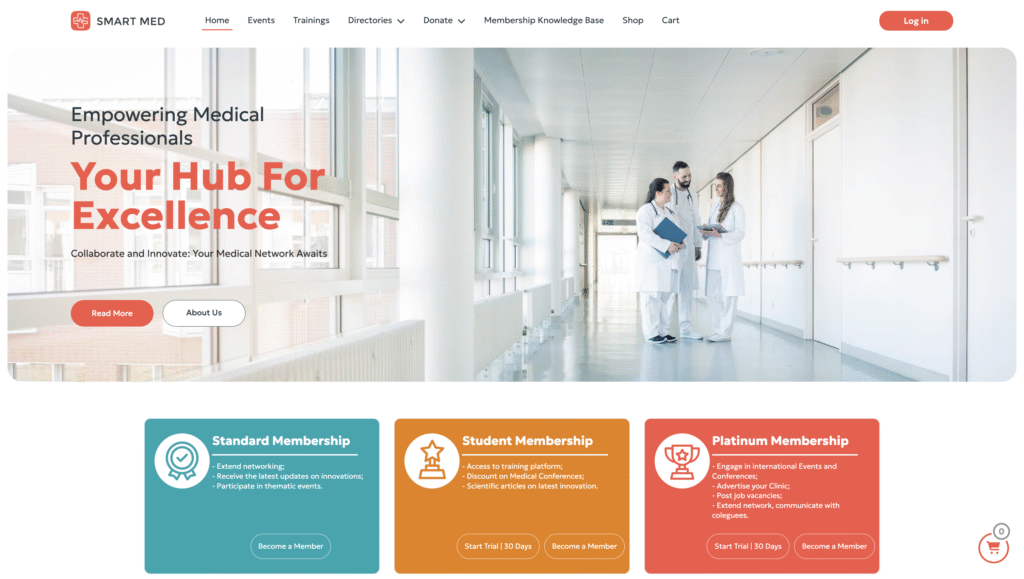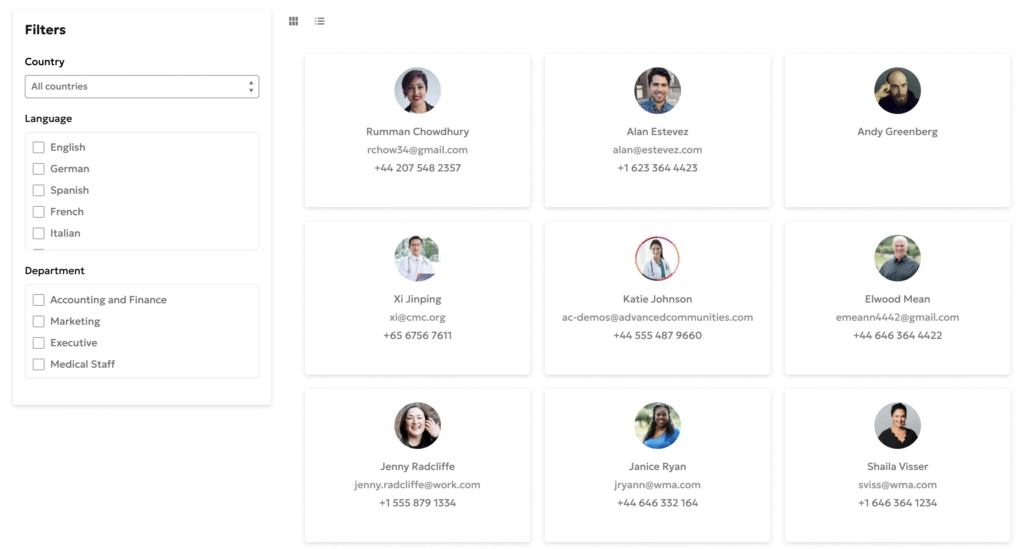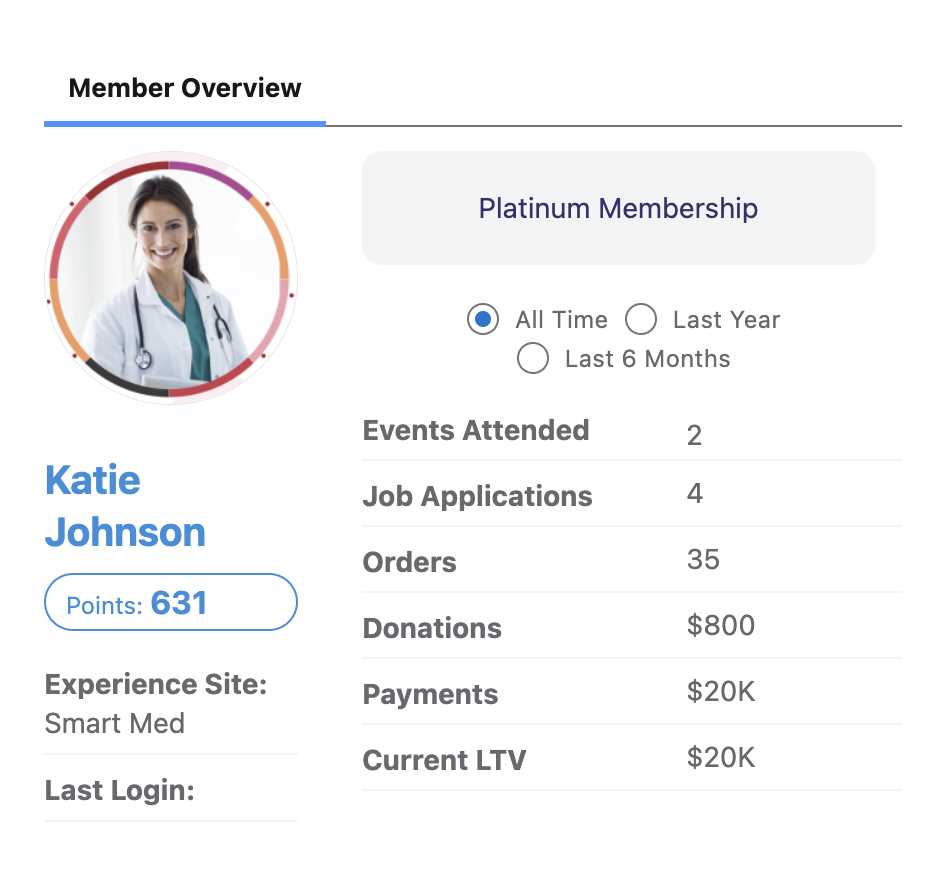Membership organizations are under more pressure than ever to deliver value, boost engagement, and operate efficiently, often with limited resources. Whether you’re a trade association, nonprofit, or professional society, staying competitive in today’s landscape means going beyond spreadsheets and siloed systems.
That’s where CRM, short for Customer Relationship Management, comes in. A robust CRM system does more than just store contact details; it empowers membership organizations to track interactions, understand member behavior, send personalized communications, and deliver seamless member experiences. The right CRM for membership organizations pulls all of your member data, communications, and processes into one place. But not all CRMs are built with associations in mind.
Choosing the best CRM for membership organisations can be a complex process. With countless software solutions and AMS providers in the market—many claiming the same features—how do you find the ideal solution that aligns with your organization’s specific goals?
In this blog post, we’ll walk you through what to look for in a CRM for associations, how to compare association software platforms, and why Salesforce, paired with a native solution like AC MemberSmart, may be the right fit for your needs.
Table of Contents
Why CRM Matters for Membership Organizations
For membership organizations, success relies on relationships—building them, nurturing them, and growing them over time. That’s exactly where a CRM system comes in. But unlike traditional CRM tools designed for sales teams, an association management CRM is purpose-built to support the complex needs of associations, nonprofits, and other member-based groups.
At its core, a CRM helps centralize and manage member data in a single, accessible membership database. This enables your team to track interactions, understand member preferences, and personalize communication across the entire member journey—from initial sign-up to renewal and long-term engagement.
A modern CRM for associations goes beyond basic contact management to offer:
- Automated renewal reminders
- Targeted email marketing tools
- Integrated event registration and member management
- Real-time reporting capabilities
- Robust financial management tools for dues, donations, and billing
With these essential features, a CRM becomes much more than software—it becomes the operational backbone of your organization. Whether you’re looking to improve member engagement, enhance data management, or increase efficiency, the right CRM can help you streamline workflows and deliver a better member experience.
As membership organizations continue to grow and evolve, adopting a CRM with association-oriented features is no longer optional—it’s a strategic necessity.
Key Features to Look for in Membership CRM Software
Not all CRM platforms are created equal, especially when it comes to the specific needs of membership organizations. A strong CRM for membership organizations combines association-specific functionality with the flexibility to adapt as your community grows. The best CRM for associations goes beyond generic CRM features and offers tools tailored for association management, member engagement, sustainable membership growth, and operational efficiency.

Here are the essential features you should look for when evaluating membership software:
1. Comprehensive Member Database
A strong CRM system begins with a well-structured member database. This is the foundation for everything else—housing your member data in one secure, centralized location. Your team should be able to access real-time records that include contact information, membership history, event attendance, and interactions. With advanced filtering and segmentation, your CRM becomes a powerful tool for understanding and managing your growing membership base.
Look for customizable fields, segmentation & tags to stay organized, and real-time updates to keep your membership data accessible and easy to manage.
2. Automated Membership Management
The best CRM for associations streamlines administrative tasks like onboarding, renewals, and status updates. With built-in automation, you can ensure that renewal reminders are sent on time, member benefits are applied correctly, and applications are processed without delay. These features save staff hours of manual work while improving accuracy and consistency, enhancing the overall member experience, and freeing your team to focus on strategy, not spreadsheets.
3. Event and Member Management
For most membership organizations, events and volunteer activities are key drivers of engagement. A quality CRM for associations should offer fully integrated events management and volunteer management capabilities. This allows you to plan, promote, and track events while syncing participation data directly to each member’s profile. Managing volunteer shifts, credentials, and communications should also be seamless, enabling you to build stronger connections with active members.
4. Communication and Email Marketing Tools
Effective communication is vital to growing and retaining a loyal membership. Look for email marketing tools that allow you to segment audiences, personalize content, and automate campaign delivery. Whether you’re welcoming new members, promoting an upcoming conference, or re-engaging lapsed participants, your CRM should support consistent and targeted messaging based on real-time member preferences. A well-executed strategy here directly enhances member engagement.
5. Reporting Tools and Data Management
The right membership management software gives you access to actionable insights through robust Analytics features. With real-time dashboards and customizable reports, leadership can monitor growth trends, evaluate campaign performance, and measure program impact. A strong database means fewer errors, better forecasting, better member management, and faster decision-making—all crucial for associations and larger organizations looking to scale.
6. Financial Management and Collection Tools
Integrated payment management tools are critical for organizations that rely on dues, donations, or paid events. Your CRM should handle invoicing, payment tracking, and reconciliation without the need for external tools, offering truly streamlined payments & subscriptions in CRM. Automating these processes improves transparency, reduces administrative overhead, and ensures that your collection tools work seamlessly within the broader system. Financial clarity empowers leadership and builds trust with your members.
7. Association-Specific Features
General-purpose CRMs often fall short when it comes to the unique needs of membership organizations. That’s why it’s essential to choose association software with features like a searchable member directory, regional chapter management, and support for certifications or continuing education. These association-oriented features help ensure that your CRM supports every aspect of your organizational structure, rather than forcing you to adapt to a generic tool.
8. Intuitive Interface and Training Support
Even the most advanced CRM software must be easy to use. A clean, intuitive interface reduces training time and increases staff adoption across departments. Look for platforms that offer helpful resources like training videos, documentation, and live support to help your team hit the ground running. The faster your staff becomes comfortable with the system, the faster you’ll realize value from your investment.
By focusing on these core capabilities, you’ll be in a stronger position to choose the best CRM for membership organizations—one that empowers your team, supports your mission, and grows with your community.
CRM vs. AMS: Understanding the Core Differences
When evaluating software solutions for your organization, you’ll often encounter both CRM systems and Association Management Software (AMS). While they can appear similar, the core differences between the two are important to understand.
A Customer Relationship Management (CRM) system is designed to manage interactions and data across relationships, typically customers or, in this case, members. For membership organizations, a CRM helps track member preferences, manage communications, and streamline processes with tools like email campaigns, reporting, and automation.
An AMS, however, is built specifically for associations and nonprofits. It includes CRM capabilities but adds specific features for associations like event registration, subscription management, financial management tools, and a centralized membership database. These are essential for day-to-day membership management.

Some platforms blur the lines by offering both. For example, Salesforce-based solutions like AC MemberSmart combine the flexibility of a leading CRM software with the specialized tools needed for effective association management. This type of platform is ideal for organizations seeking scalability, customization, and long-term value.
Why Salesforce is a Strong Foundation for Membership CRM
Salesforce is one of the most trusted names in CRM software, known for its flexibility, scalability, and powerful automation tools. While originally built for sales teams, its robust platform is highly effective for membership organizations looking to manage operations, engage members, and streamline processes.
With Salesforce, organizations can centralize member data, track member activity, automate renewal reminders, and manage event registration, financial tools, and email marketing—all within a single centralized platform. Its advanced analytics features and strong features for membership management make it easy to understand member behavior and improve engagement.

When paired with a native AMS like AC MemberSmart, Salesforce becomes a purpose-built solution for associations. You get the full power of Salesforce along with specific features for associations—like a membership database, subscription management, and member directory—without relying on other disconnected software solutions.
For organizations seeking a scalable, customizable, and future-ready CRM platform, Salesforce offers a strong and proven foundation.
Considerations When Choosing the Right Platform
Choosing the right membership CRM goes beyond ticking off features—it’s about finding a solution tailored to your organization’s specific needs, structure, and growth plans. Below are key factors to evaluate as you compare platforms. For a practical example of how a Salesforce-based CRM and AMS can work together, explore how AC MemberSmart from Advanced Communities helps membership organizations manage members and engagement in one place.
Organizational Size and Scalability
Your membership base plays a major role in determining your needs. A small association may benefit from a simple, user-friendly system, while larger organizations typically require more advanced capabilities like automation, custom workflows, and scalable architecture.
Ease of Use and Staff Adoption
An intuitive interface is essential for successful implementation. Platforms that offer user-friendly design, streamlined navigation, and access to training videos or onboarding support will be easier for your team to adopt and more likely to deliver long-term success.
Integration with Existing Tools
The ideal membership management software should function as part of a broader tech ecosystem. Look for a unified platform that integrates with tools for email marketing, finance, event registration, and content management, eliminating the need for patchwork other software solutions.
Feature Depth and Flexibility
Make sure the platform includes all the essential features you need: a robust membership database, payment tools, subscription management, different membership packages, and strong reporting tools. Systems built with association-oriented features can often reduce the need for costly add-ons.
Total Cost and Long-Term Value
While cost is always a factor, the cheapest solution may not offer the best value. Consider the full cost of ownership—including implementation, support, upgrades, and third-party integrations. A flexible system with built-in tools often delivers better ROI over time.
Wrapping Up
Choosing the right system to manage your members is a strategic decision that can shape your organization’s future. If you’re considering a new platform, focus on what will help your team work smarter and support your members more effectively. The right choice will do more than organize information—it will move your mission forward.
Ready to explore how it could work for your association?
Book a call with our team to see how you can benefit from implementing Salesforce and AC MemberSmart.
FAQ
What is a membership CRM?
A membership CRM is a Customer Relationship Management system designed specifically to help organizations manage member data, communications, renewals, events, and engagement—all in one centralized platform.
What is the best CRM for membership organizations?
The best CRM depends on your organization’s size, goals, and needs. Many associations choose Salesforce combined with a native AMS like AC MemberSmart for its flexibility, scalability, and association-specific features.
What is the difference between CRM and AMS?
A CRM focuses on managing relationships and data, while an AMS (Association Management Software) includes CRM features plus tools tailored for associations, like membership tracking, event management, billing, and certifications.



